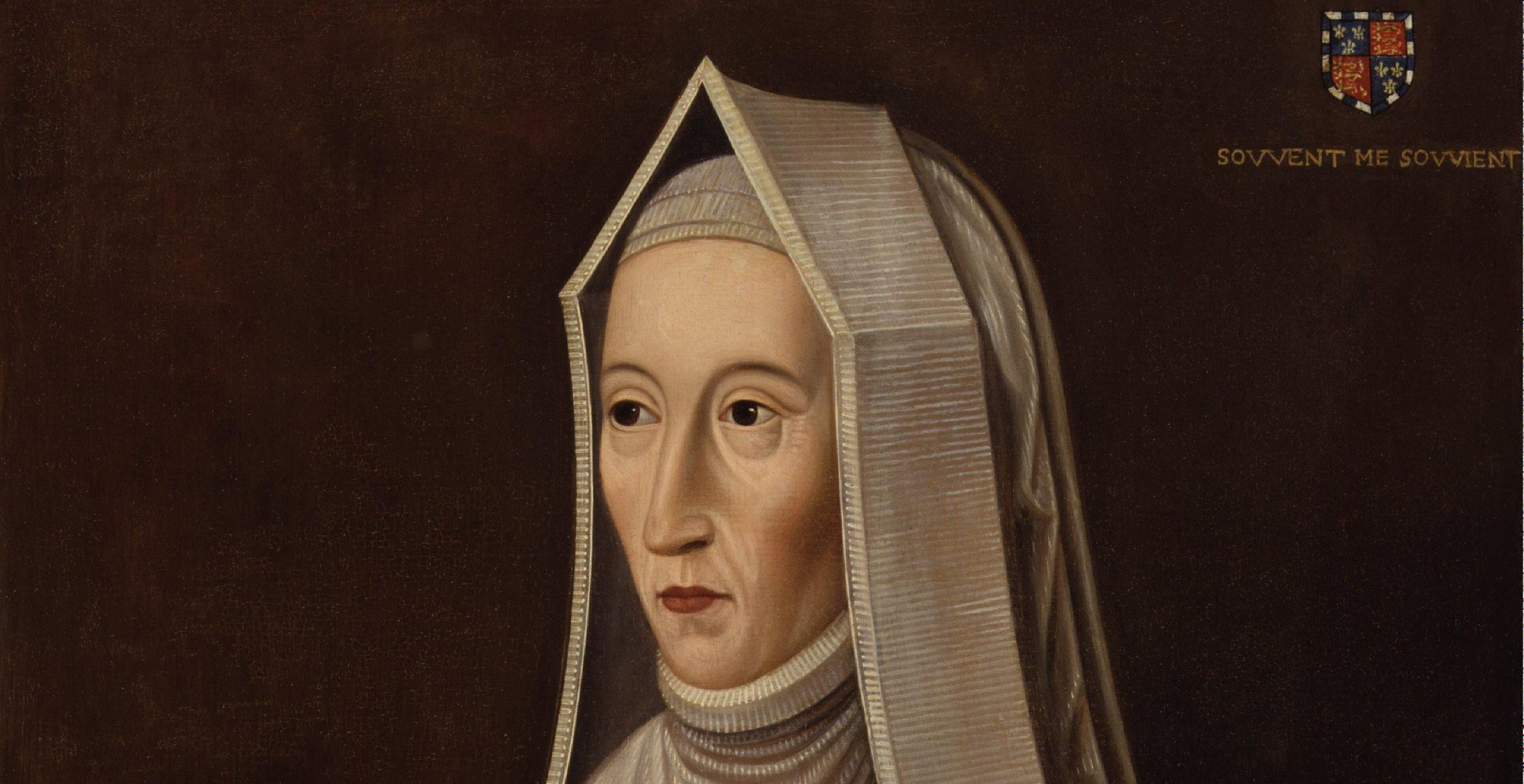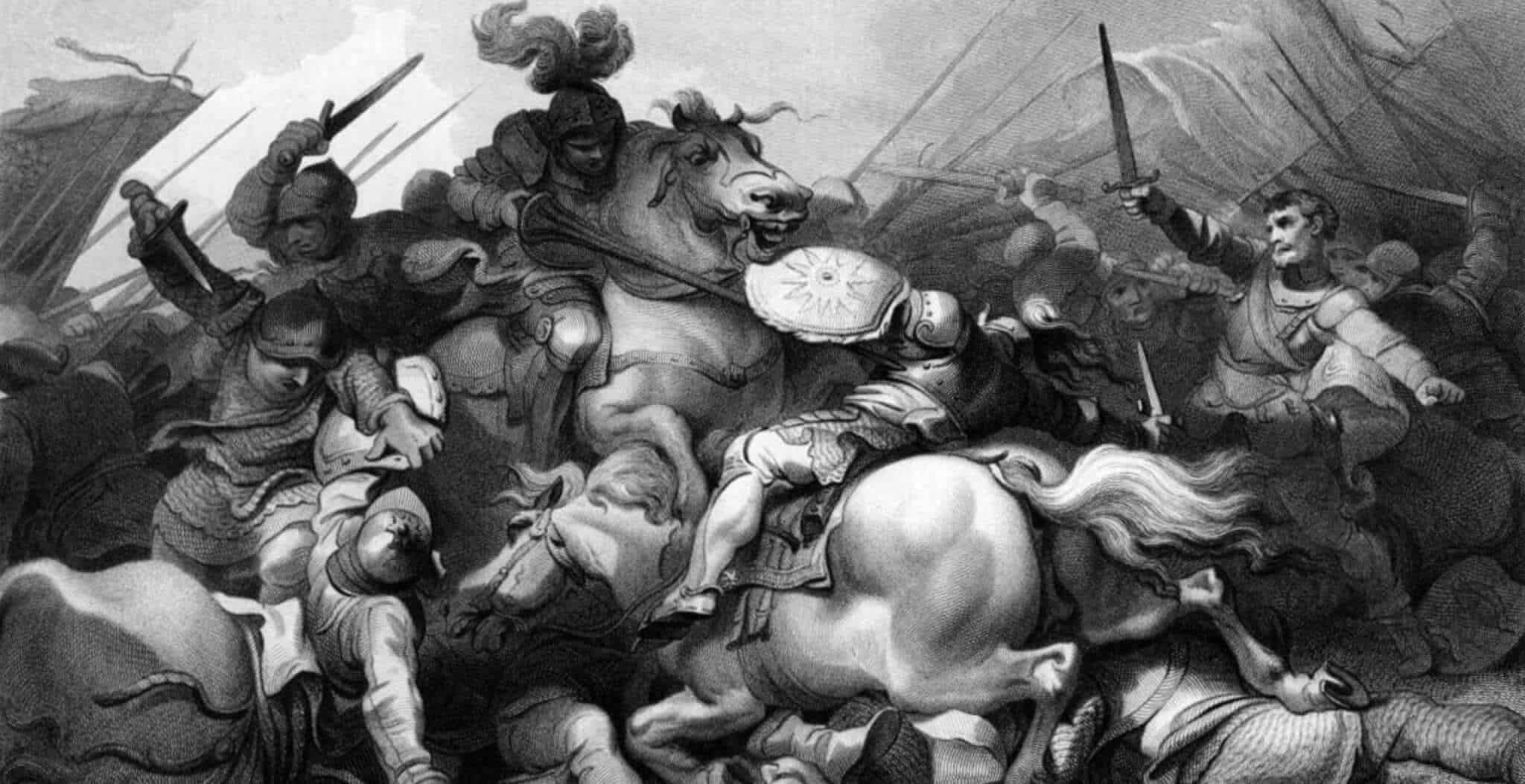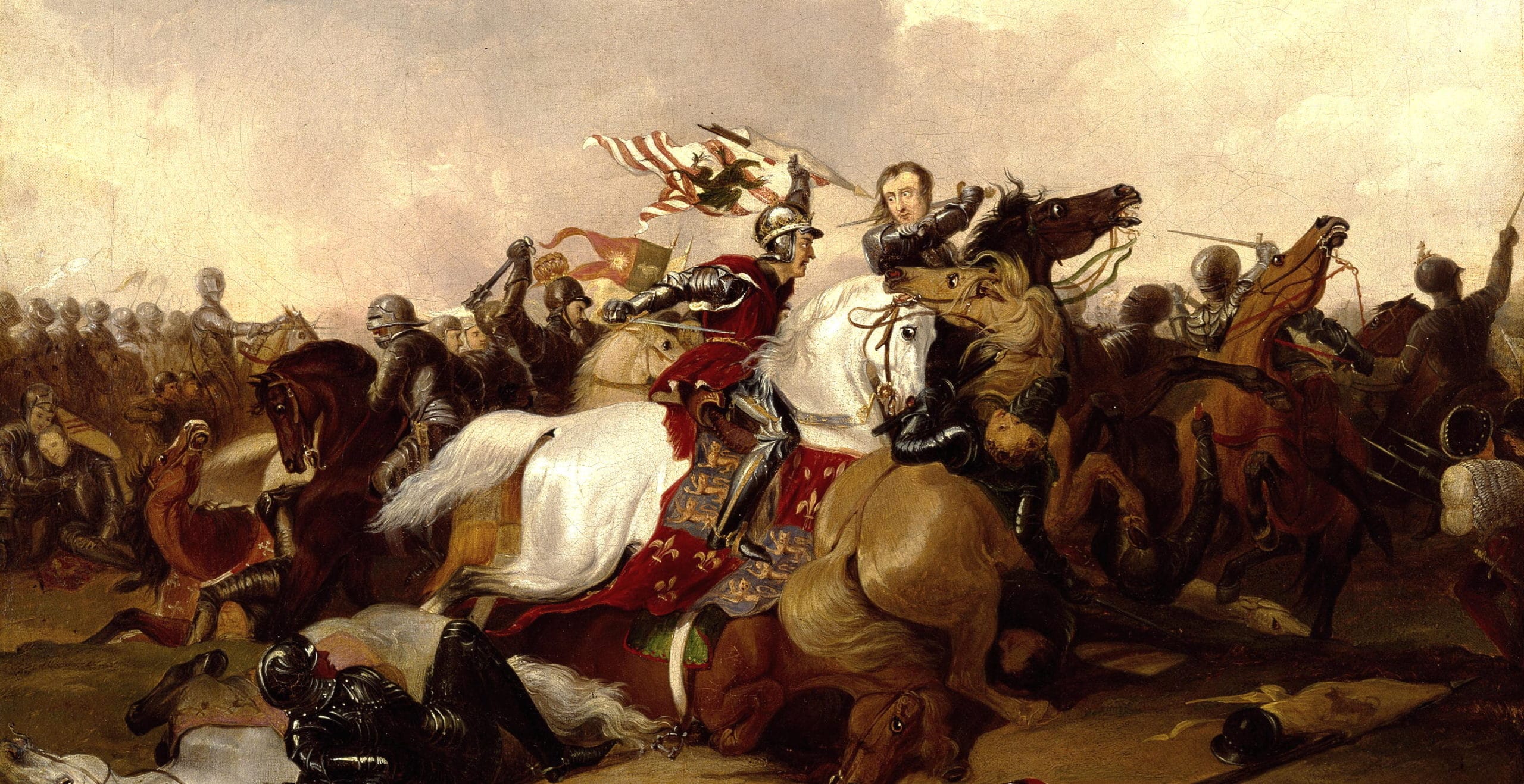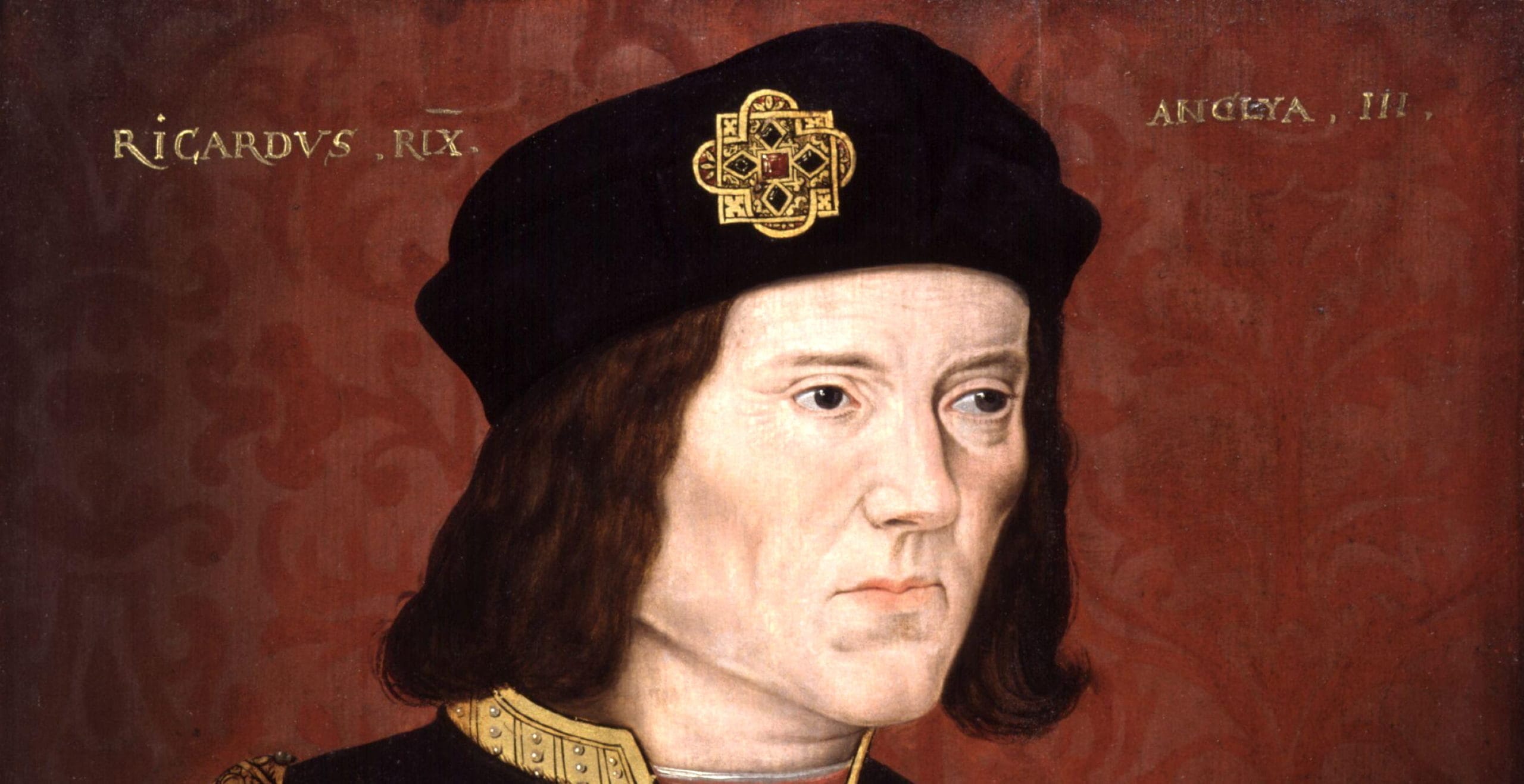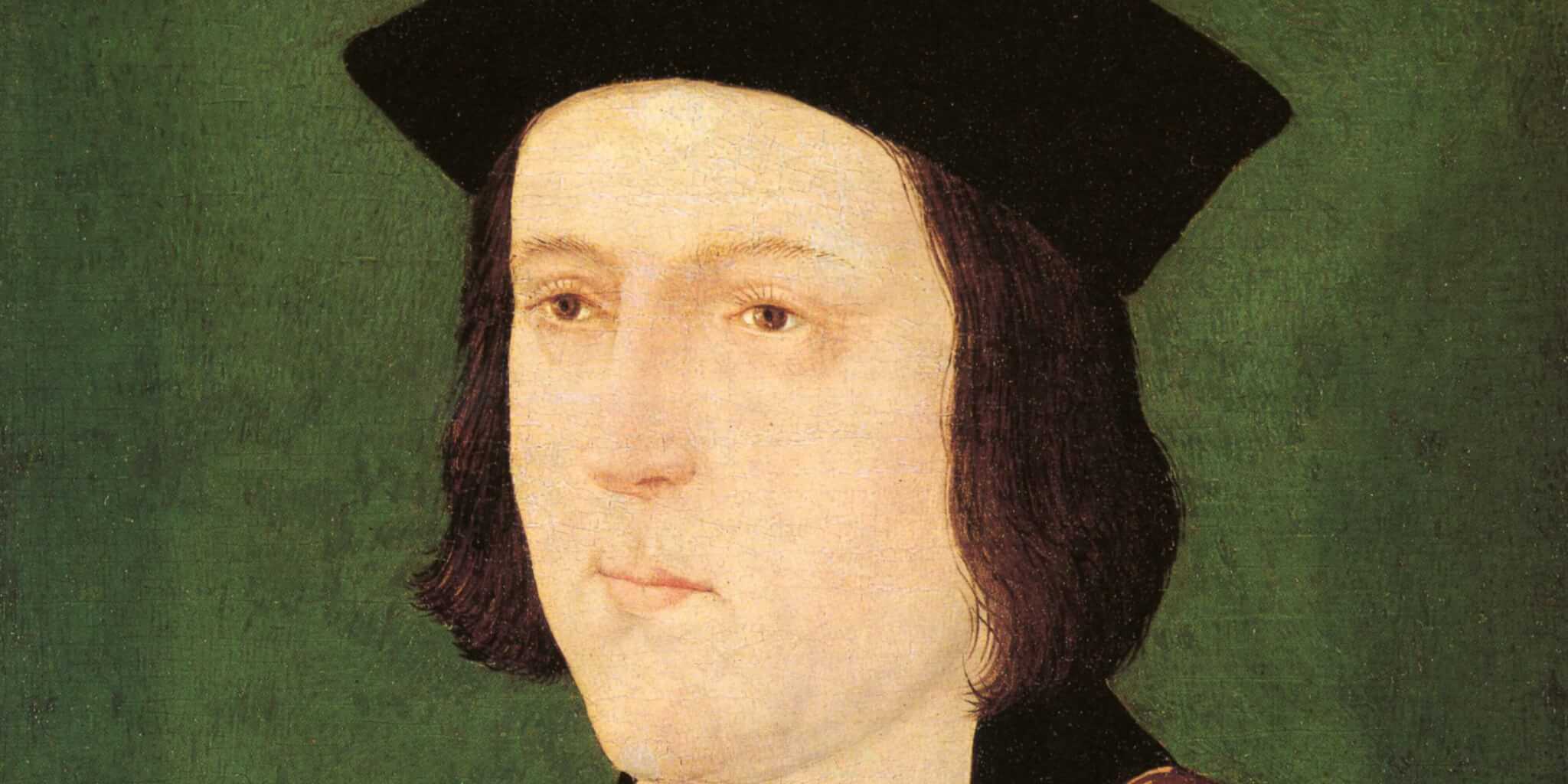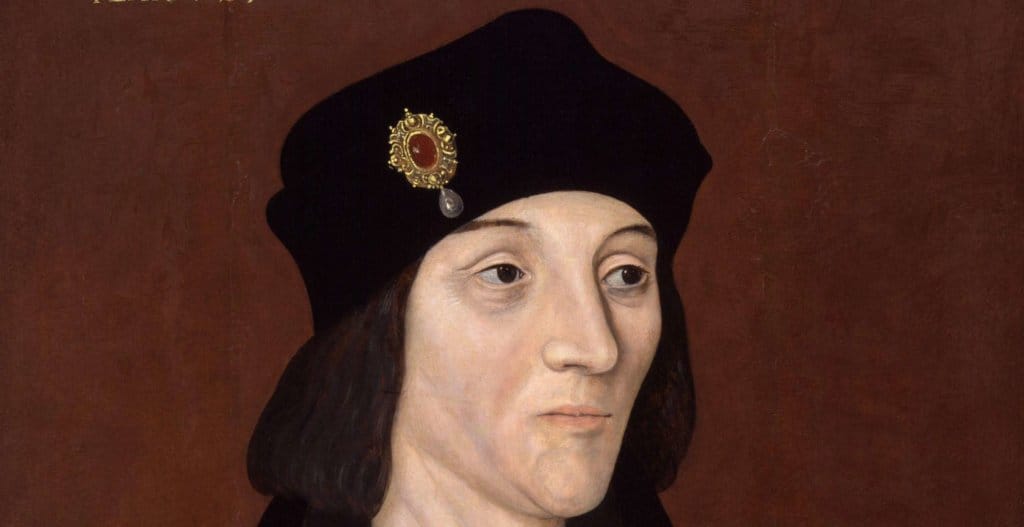Often referred to as the matriarch of the Tudors, Margaret Beaufort was a powerful member of the royal household and an influential figure in the greater political machinations of the day.
Herself a descendant of King Edward III, she made sure to secure the royal crown for her own son, Henry VII.
Born on 31st May 1443 in Blestoe Castle, to John Beaufort, the Duke of Somerset and his wife Margaret Beauchamp, an heiress in her own right, young Margaret was the descendant through her father of John of Gaunt and thus a descendant of King Edward III.
At the time of her birth, John Beaufort was in the middle of military preparations on behalf of King Henry VI.
Whilst in France, Margaret’s father made a blunder which he paid for on his return to England as he was banished from the royal court. It is thought that he committed suicide not long afterwards leaving Margaret as his sole heiress. She was left a substantial legacy including her ability to contest the throne.
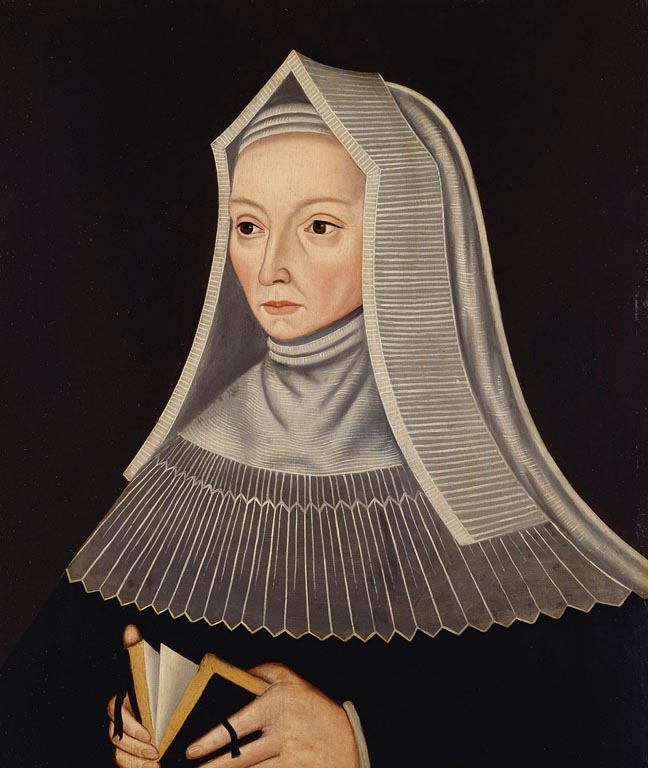
When she was only one year old, the king gave her wardship to William de la Pole, 1st Duke of Suffolk. Keen to secure his own family’s future, de la Pole arranged for his son John to marry Margaret, an arrangement that occurred when she was just a young child.
Three years on, the marriage was to be dissolved and Margaret’s wardship was passed on to Henry VI’s half-brothers, Edmund and Jasper. It was decided that Edmund would marry Margaret as a way to strengthen Edmund’s possible claims to the throne, if Henry VI were not able to produce an heir.
Thus, at the age of twelve Margaret was married to Edmund Tudor in November 1455. Just a girl, Edmund was twelve years older and immediately found himself embroiled in the War of the Roses.
 Tomb effigy of Edmund Tudor
Tomb effigy of Edmund Tudor
A Lancastrian, Edmund would not live to see his child with Margaret as he was subsequently captured by the Yorkists and died of the plague in captivity in Carmarthen whilst Margaret, now thirteen, was seven months pregnant.
Now in the care of her brother-in-law, Jasper Tudor, Margaret gave birth to a baby boy called Henry Tudor at Pembroke Castle. As she was so young, her birth had been extremely painful and difficult and she would not have any further children.
Not long after her recovery from the traumatic pregnancy and birth, Jasper made sure to arrange a marriage which would secure Henry Tudor’s future. Now fourteen, Margaret married her second cousin, Sir Henry Stafford and went to live at Woking Palace.
Meanwhile, the care of her child Henry Tudor fell to his uncle Jasper Tudor, who granted Margaret and her husband the opportunity to visit him at Pembroke Castle.
Whilst family arrangements were taken care of, the family had larger problems to contend with, as years of fighting in the War of the Roses led to a disastrous loss for Lancastrians at the Battle of Towton in 1461, allowing for a York victory and a Yorkist king, Edward IV.
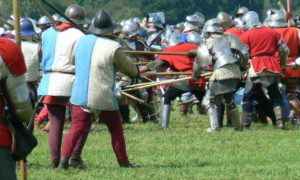
The Lancastrian losses were felt keenly by Margaret who had lost her father-in-law. Meanwhile, her son Henry was taken into the ward of Sir William Herbert whilst Jasper Tudor fled to Scotland in a bid to rally support.
Still able to visit her son, Margaret would however witness her son’s lands handed over to the Duke of Clarence, the new king’s brother.
In 1470 there was a brief resurgence of the Lancastrian king Henry VI after the efforts of the Earl of Warwick to launch a rebellion. Nevertheless, such power grabs were short-lived and the Battle of Barnet resulted in a Yorkist victory forcing Margaret to consider her options.
Margaret whose husband, Lord Stafford died at the battle, realised the severity of the situation and thus implored Jasper Tudor to taker her son Henry abroad to safety. This he did, an act which led to her not seeing her son for another fourteen years.
Now a widow for the second time, Margaret embarked on her next marriage to Thomas Stanley, a nobleman and politician. This was to be nothing more than a marriage of convenience as it helped to secure her position in the court of Edward IV and his wife Elizabeth Woodville.
Margaret was now on a mission to secure her son’s future, so her influence in court and her ability to win the favours of those in power at the time was crucial. She appeared to complete this task with a great level of success including her nomination as godmother to Queen Elizabeth’s daughter.
Meanwhile, her son continued to hide out in the safety of the continent.
After Edward IV died, Richard III seized the throne and Margaret remained in the royal court, now in the service of Anne Neville.
With Edward out of the picture, Margaret appeared to join forces with Elizabeth Woodville, mother of the two princes who had been captured and imprisoned at the Tower of London by Richard III.
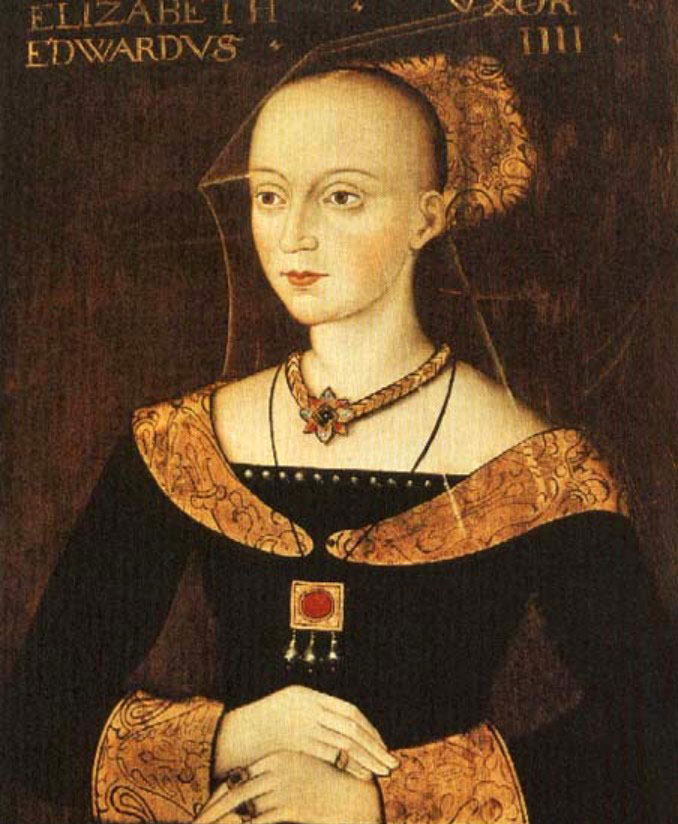
As both women had a mutual desire to rid themselves of King Richard, an alliance formed between them which involved supplanting Richard with Henry Tudor.
In 1483, the Buckingham rebellion consisted of failed uprisings against the rule of Richard III, involving Henry Stafford, 2nd Duke of Buckingham, Margaret Beaufort and Elizabeth Woodville.
Meanwhile Margaret’s son Henry, who had been in exile in Brittany, secured the backing of a Breton treasurer who was hoping that if successful, the rebellion would secure an alliance with Brittany and England.
Henry Tudor, alongside 500 Breton soldiers and other supporters, launched their ships from Brittany however unfortunately for them, a bad storm prevented them from arriving on time and carrying out their plan.
After some ships were forced to turn around, Henry Tudor arrived in Plymouth only to find out that Buckingham’s rebellion had failed leading to Buckingham’s execution and Henry Tudor’s return across the Channel to safety.
Meanwhile, his mother was stripped of all her titles and estates by Richard and forced into house imprisonment at her husband’s home. A total ban was placed on any communication with her son in France.
Such instructions were not abided to by either Margaret or her husband Thomas Stanley.
The Battle of Bosworth Field in 1485 was to be the defining battle of the War of the Roses, cementing a Lancastrian victory and securing a new royal dynasty: the Tudors.
With Richard III having died in combat, all that was left was for Henry Tudor to take his place on the throne.
Now crowned King Henry VII, Margaret became the Countess of Richmond and Derby and was given the Lady of the Order of the Garter.
Lady Margaret Beaufort had, against all odds and with a great deal of political acumen, secured her son as King of England.
She was soon rewarded for all her hard work, referred to by the court as “My Lady the King’s Mother as well as having her named a “feme sole”. This rather unique title secured Margaret a lifetime of legal, political and social autonomy including property rights.
In the Tudor court Lady Margaret exercised power over many political and personal affairs, displaying much the same power as a queen, but at the heart of which remained her desire for independence.
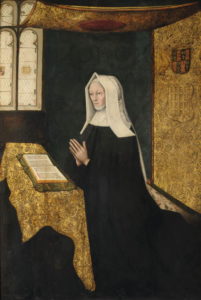
In the meantime, she chose a vow of chastity, despite being married and ended up moving away to Collyweston whilst her husband regularly visited her at her residence.
Her involvement in the personal sphere of the royals was notable as she worked alongside her daughter-in-law Elizabeth to arrange the upbringing of the heirs and their subsequent marriages.
When Elizabeth passed away in 1503, it was Margaret who stepped up to assume the role of the main female in court. Her involvement in securing the future of her family and the dynasty was palpable.
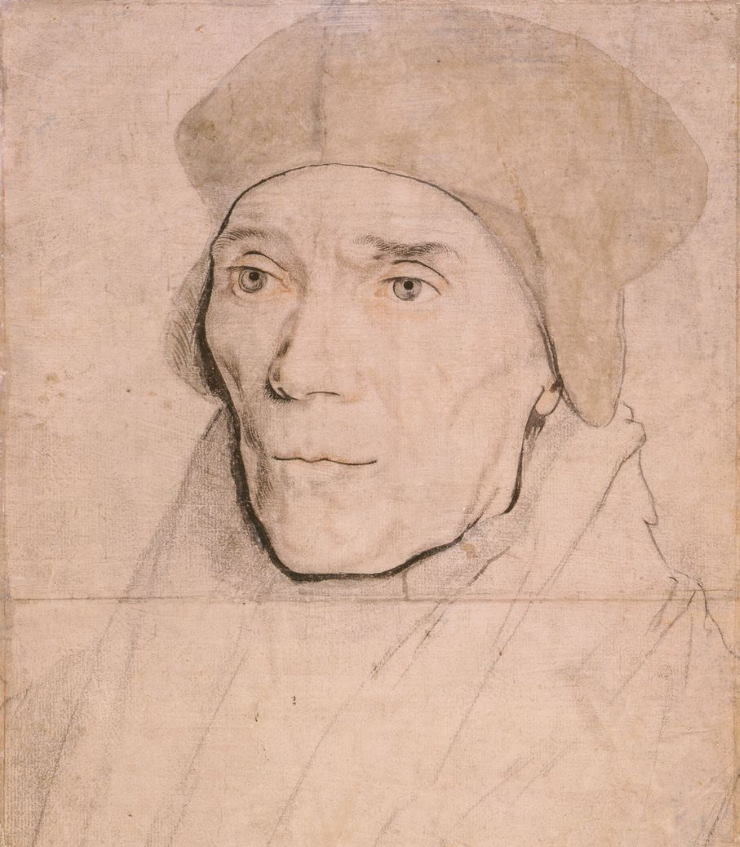
Meanwhile, her own projects and interests in theological and educational endeavours became evident when her confessor, the Bishop of Rochester, John Fisher, encouraged her to set up two colleges at Cambridge University.
The humanist scholar Erasmus noted Margaret Beaufort’s charitable efforts and her piety and was recognised as such by the bishop in his eulogy at her funeral.
In April 1509, King Henry VII died and left his mother in charge of his will, trusting her to secure his son and heir as the new king. She would continue to maintain her role as the chief organiser of the family’s affairs, preparing for both her son’s funeral and her grandson’s coronation.
With her grandson now crowned King Henry VIII she made sure to give him advice on whom he should elect as members of his privy council. A day after Henry VIII’s eighteenth birthday, Countess Margaret passed away, only two months after the death of her son.
A powerful and independent woman, devoted mother and astute political maneuverer, Lady Margaret Beaufort had been a force to be reckoned with.
Jessica Brain is a freelance writer specialising in history. Based in Kent and a lover of all things historical.
Published: March 2nd, 2021.
